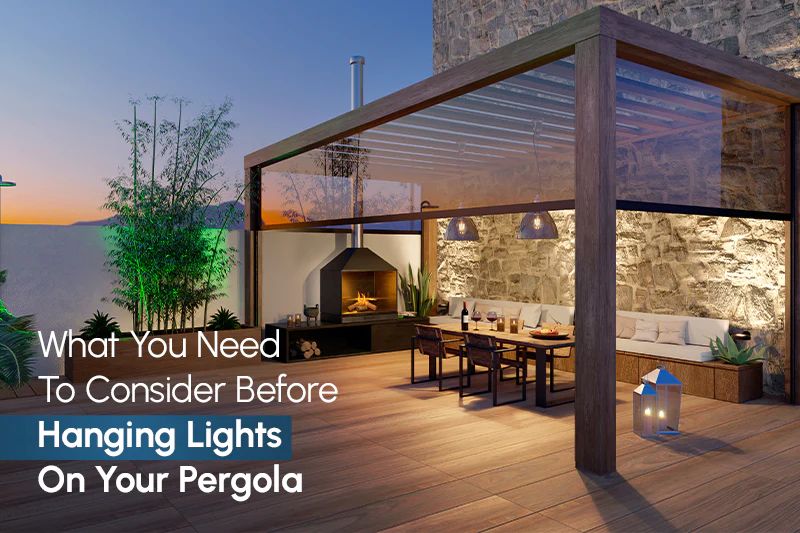Winter Garden Lighting: Illuminating Your Outdoor Space
Winter gardens can be cold and stark, but adding lighting can warm them up and make them feel more inviting. Illuminating your outdoor space in winter provides several benefits:
Lighting allows you to extend the usable hours of your garden into the evenings. With proper lighting, you can keep enjoying your garden even after the sun sets. Path lighting and spotlights ensure safe navigation and highlight decorative features. Ambient lighting creates a cozy atmosphere.
Lighting also enhances the visual appeal of winter gardens. Bare branches, evergreen foliage, statues, and other garden elements look beautiful bathed under lights. Creative lighting techniques make gardens more dynamic and interesting after dark.
This guide will provide an overview of various lighting options to brighten up your winter garden and outdoor living spaces. We’ll cover safety considerations, lighting design tips, and ways to add ambient, spot, and path illumination. With the right lighting plan, your garden can feel warm and welcoming no matter how cold it gets outside.
Safety Considerations
When illuminating your outdoor winter garden, safety should be a top priority. Using outdoor rated lights that are designed to withstand cold, wet, and snowy conditions is crucial for both safety and performance. According to Best Pro Lighting, exterior lights rated for outdoor use have features like weatherproof housings and water-resistant connections. This prevents electrical hazards from wet weather.
Strategically placed lighting can also help prevent trips and falls during icy conditions. Path lighting and step lighting are useful for illuminating walkways and highlighting changes in elevation. Proper lighting allows you to see hazards and navigate safely. As noted by Cast Lighting, lighting driveways, steps, and pathways is an important winter safety element.
Additionally, outdoor lighting can aid fire safety. Well-lit addresses help emergency responders quickly locate your home if needed. Lighting around gas meters, propane tanks, grills, fire pits, and chimneys also reduces the risk of accidental fires.
Ambient Lighting

Ambient lighting helps set a cozy mood and illuminate pathways and seating areas in your winter garden. There are a few key types of ambient lighting to consider:
String Lights
String lights add a magical, festive touch when hung between trees, bushes, pergolas, and other structures in your outdoor space. Opt for warm white LED string lights to highlight winter gardens in a soft glow. Look for durable, commercial-grade lighting meant for long-term outdoor use. According to experts at Frisellalighting.com, “String lights are versatile and bring personality and charm to every corner of your garden.” [1]
Lanterns
Lanterns containing flameless candles or LED bulbs cast a warming luminescence over winter gardens. Place lanterns along pathways, hang them from tree branches, arrange them on steps, or cluster them together as a focal point. Opt for durable metal, glass, or weather-resistant polyresin lanterns. The lighting experts at Eichenlaub.com recommend, “Strategically placed lanterns can help enhance the existing landscape and architecture.” [2]
Uplighting Trees
Uplighting trees from below creates dramatic silhouettes and highlights their winter beauty. Use LED spotlights or flood lights at the base of trees to cast a gentle glow upward into branches and foliage. Uplighting creates depth and dimension when illuminating groupings of trees or foreground specimens.
Spotlights
Spotlights are a versatile type of lighting that can highlight specific landscape features, structures, or trees. They create a dramatic effect by forming a beam of intense light on a particular area. Spotlights are commonly used to emphasize focal points and provide accent lighting in the garden. According to Best Outdoor Spotlights, 3000K warm white spotlights give a natural, vivid color to lawns, landscaping, and other outdoor areas (source).
When using spotlights, aim to highlight interesting or unique aspects of the yard. For example, you may want to spotlight a water feature, specimen tree, architectural detail, or art installation. Position the spotlights to fully illuminate the focal point without too much spill-over light. Angle adjustment allows flexibility in directing the beam. Consider placing spotlights in strategic locations around the yard to create a balanced lighting effect. Use them sparingly to maintain drama and avoid over-lighting the space.
For optimal performance, choose spotlights designed for outdoor use with weather-resistant construction. Opt for LED or low-voltage spotlights to minimize energy usage. Use separate transformers when linking multiple spotlights together in a system. Proper aiming during installation is key to maximizing the impact of accent lighting. Adjustments can be made over time as garden features change. With thoughtful placement and angles, spotlights provide striking accents to highlight the best features of the winter garden.
Path Lighting
Proper path lighting is crucial for guiding visitors safely through your winter garden after dark. Path lights come in both solar and electric options. For electric path lights, look for weather-resistant fixtures that can withstand cold temperatures and moisture.
Bollards are short, standalone fixtures that illuminate walkways and line sidewalks and driveways. Choose bollards with frosted glass or plastic covers to provide a warm, diffused glow. Place bollards about 10-15 feet apart for adequate visibility.
For a more integrated look, opt for in-ground lighting along paths. Look for fixtures rated IP65 or higher to ensure waterproofing and durability. Space in-ground lights closer together, about 6-8 feet apart. This provides consistent illumination along the path’s length. Choose warm white (2700-3000K) bulbs to light the way while avoiding glare (source).
Lighting Design Tips
When designing lighting for your winter garden, it’s important to think about layering different light sources and creating a focal point to highlight an architectural feature or plant. Here are some tips for an effective lighting design:
Layer ambient, task, and accent lighting. Use ambient lighting like pathway lights to provide overall illumination. Add task lighting like spotlights to brightly light seating areas or spots where you’ll be working in the garden. Then use accent lighting creatively on plants, trellises, statues, or other garden elements to create a focal point.
Create a focal point. Rather than evenly lighting the entire garden, focus your brightest lights on one or two striking plants, garden ornaments, or architectural elements. The focal point will draw the eye and create visual interest.
Light “rooms.” Treat your winter garden like a series of outdoor rooms by installing path lighting and spotlights to illuminate each defined space. For example, brightly light a cozy sitting area while using lower intensity lights along the paths in between.
Position lighting thoughtfully to highlight the shapes and textures of plants and hardscaping. Uplights in ground can showcase the branch structure and bark of trees beautifully. Backlighting and silhouetting are other options. Always aim for a balanced, natural look.
Use lighting controls like dimmers or timers. This allows you to easily adjust the mood and conserve energy.
Light Colors
The color of lighting can dramatically impact the ambiance and feel of an outdoor winter garden. When selecting lighting, homeowners often debate between warm white and cool white shades.
Warm white lighting ranges from 2700K to 3000K on the Kelvin scale and emits a cozy, inviting glow. This hue is ideal for creating a comfortable atmosphere. Many homeowners prefer warm white for outdoor lighting during fall and winter months, as it feels reminiscent of firelight and candles (Source).
Cool white lighting is between 4000K and 5000K and gives off a more energizing, crisp light. This can help illuminate pathways and tasks. However, some find it to be harsh or clinical for ambient winter garden lighting.
RGB color changing lights allow homeowners to choose from a spectrum of colors to suit their mood or highlight garden elements. These can be pre-programmed or controlled through an app. Vibrant colors like blues, greens, and purples can make plants pop on gray winter days (Source).
Lighting Controls
Lighting controls like timers and sensors can help manage your winter garden lighting effectively. Using timers allow you to set schedules to turn lights on and off automatically at certain times, saving electricity and prolonging bulb life compared to leaving them on all night (Candela Controls).
Motion sensor lighting is also useful for winter gardens. These lights turn on when motion is detected in the area. This provides safety and security as you walk through the garden at night. Motion sensors also conserve energy by only turning on lights when needed (Candela Controls).
Consider manual lighting controls as well. While automatic timers and sensors provide convenience, sometimes manually turning lights on/off is preferred. Place manual control switches in accessible locations along garden pathways. This allows you to easily control different lighting zones in your winter garden (Houstan Lightscapes).
Energy Efficiency
When it comes to outdoor lighting, energy efficiency should be a top concern. Switching to more efficient lighting can significantly reduce energy usage and costs. LED lights are far more energy efficient than traditional incandescent bulbs. According to Energy5, LED lights consume at least 75% less energy and last 25 times longer than incandescent lighting (https://energy5.com/how-landscaping-can-enhance-energy-efficiency-in-winter). The Garden Design Company also notes that LEDs use a fraction of the energy of halogen bulbs (https://www.thegardendesignco.co.uk/garden-lighting-solutions-brightening-up-your-winter-garden).
Solar-powered lighting is another energy-saving option as it doesn’t require any wiring or electricity. Strategically placed solar lights can beautifully illuminate pathways and accent features. Constellation recommends solar path lights, spotlights, and post cap lights as energy-efficient choices (https://blog.constellation.com/2019/02/28/energy-efficient-outdoor-lighting-for-small-businesses/).
Other tips for boosting energy efficiency include using timers, motion sensors, and dimmers to ensure lights are only on when needed. Choosing the right amount of light for each area and spacing lights appropriately will also prevent waste and excess lighting. With some thoughtful planning and upgrades, your winter garden can be energy efficient while still providing beautiful, functional illumination.
Enhancing Winter Gardens
Winter landscape lighting can provide numerous benefits for enhancing gardens in the colder seasons. Properly placed lighting not only illuminates pathways and accentuates plants and hardscaping, but also brings life and vibrancy to the garden during darker winter months.
Summary of lighting benefits:
– Adds curb appeal and aesthetic value to the home exterior (source)
– Creates a warm and welcoming ambiance (source)
– Allows safe navigation of garden areas at night
– Highlights garden features and enhances hardscaping
– Encourages outdoor enjoyment and entertaining
Strategically placed lighting brings vibrancy and life to the garden even during the cold winter season. Uplights in trees illuminate branches and create depth and drama. Path lights guide visitors safely through the space and spotlight plants and structures. The right lighting transforms the winter garden into a magical, engaging setting filled with visual interest and ambiance.




